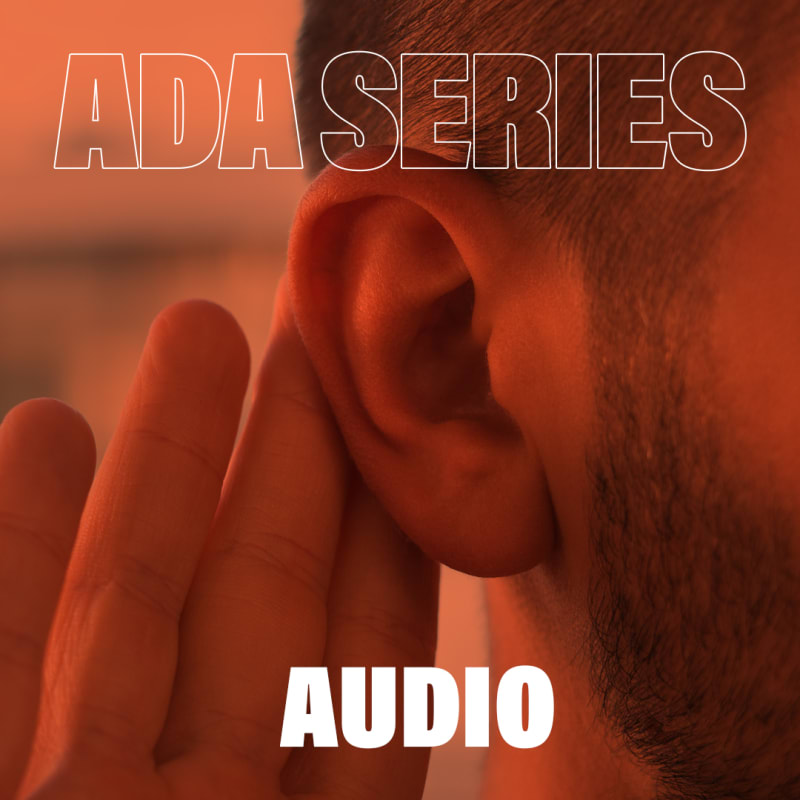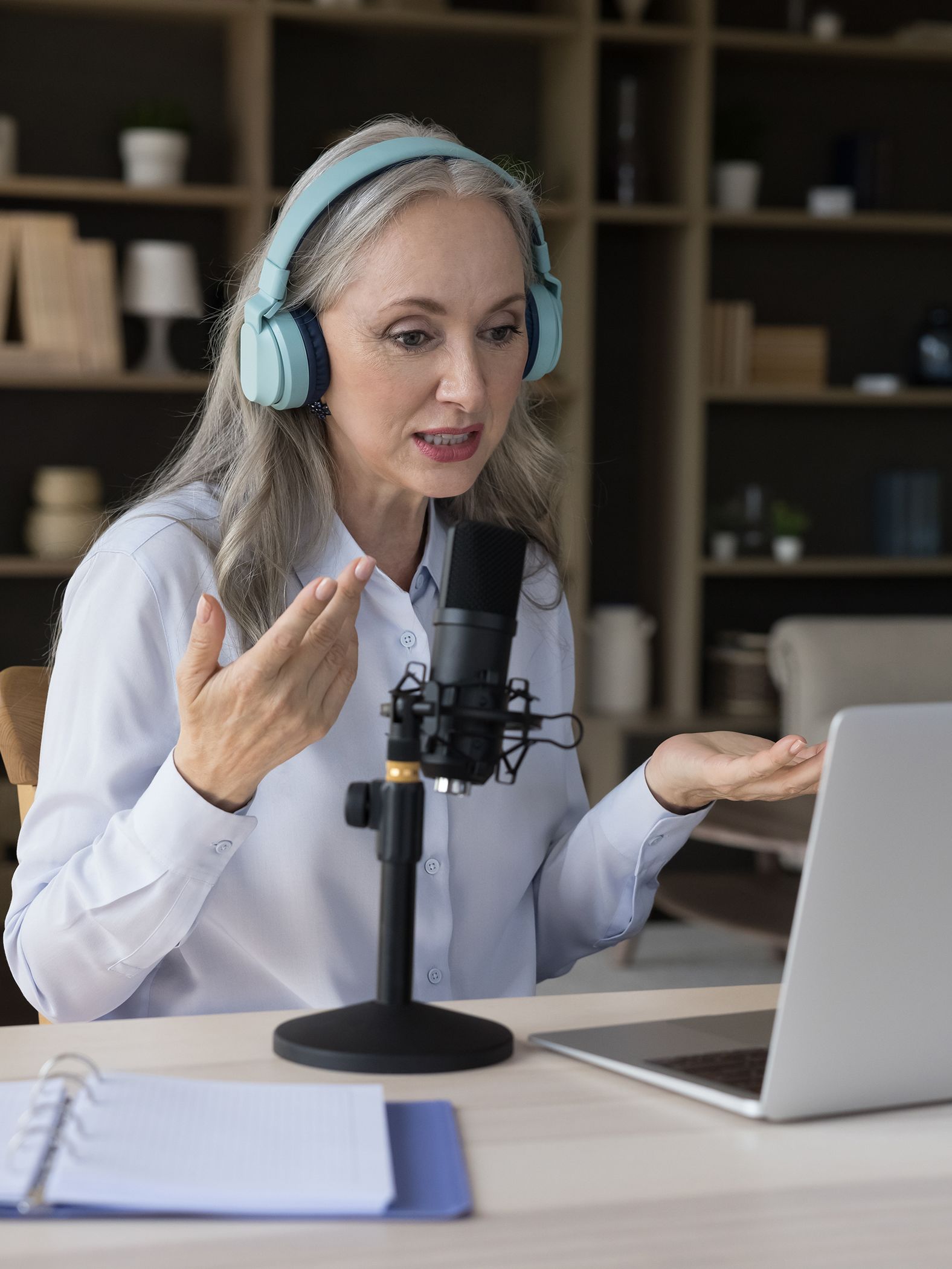
Welcome to the third post in our series on the Americans with Disabilities Act (ADA) and its intersection with the AV industry.
In the previous post, we covered the scope of the ADA and why it’s so important for AV professionals to understand the impact of designing for accessibility. Making spaces accessible for all enhances the experience for everyone, and it ensures equal access to technology in public spaces.
For this entry, we’re focusing on the Audio part of AV – how to achieve exceptional interpersonal audio experiences for conferencing and learning applications. It's on us as AV professionals when scoping a project that includes ADA requirements to make sure everyone can send and receive messages through assistive listening systems, captioning, and voice lift.
Consider this blog series a companion piece to Legrand | AV’s publication “ADA in AV: Making AV Technology ADA Compliant.” The guide is the most comprehensive publication specifically for the AV industry about the ADA that we know of. Visit www.legrand.com/ada to find the guide and other free resources on this topic.
Notes On the Nature of Communication
Human language and communication are built on redundancy. We are constantly piecing together bits of information through several senses as a way to bridge the gaps that occur in sound or vision. We watch body language and lip movements to overcome missing a word or two. Even hearing with two ears can provide slight variations that our brains stitch together to create a cohesive message.
Without these redundancies, some people have to work harder due to hearing deficiencies, cognitive challenges caused by stroke or brain injury, or working in a secondary language. Add in poor room acoustics, background noises and distance from the speaker, and the problems only increase.
“The National Institutes of Health says there’s 15 percent of American adults that have some difficulty in hearing,” said Tony Braun, vice-president of global sales and marketing at Williams AV, a manufacturer of assistive listening systems, wireless intercom and language interpretation solutions. “That 15 percent equates to about 37 million people that have hearing trouble. Extend that globally and it’s about 1.5 billion people.”
According to the World Health Organization, that number will increase to 2.5 billion experiencing some degree of hearing loss by 2050. Communicating under these conditions can simply be exhausting. Luckily, there are many ways AV systems can help!

Assistive Listening Systems
In 2020, the ADA expanded its requirements for effective communication to ensure Title II entities (state and local governments) and Title III entities (businesses and nonprofit organizations that serve the public) take the necessary steps to enhance communication for individuals with vision, hearing, or speech disabilities. Some ways AV systems can meet these communication requirements are through assistive listening systems, live captioning, and video streaming sign language interpreters.
Let’s tackle assistive listening systems (ALS) first.
There are three types of ALS approved by the ADA:
- Radio Frequency (RF) ALS broadcasts signal from the room’s microphones and audio sources to users wearing headsets.
- Infrared (IR) ALS transmits audio information through encoded infrared light to users equipped with infrared receivers.
- Induction loop/T-coil ALS uses magnetic strips built into the room’s floor to radiate magnetic waves to wire neck loops worn by users. The loops re-radiate the magnetic energy to users’ hearing aids.
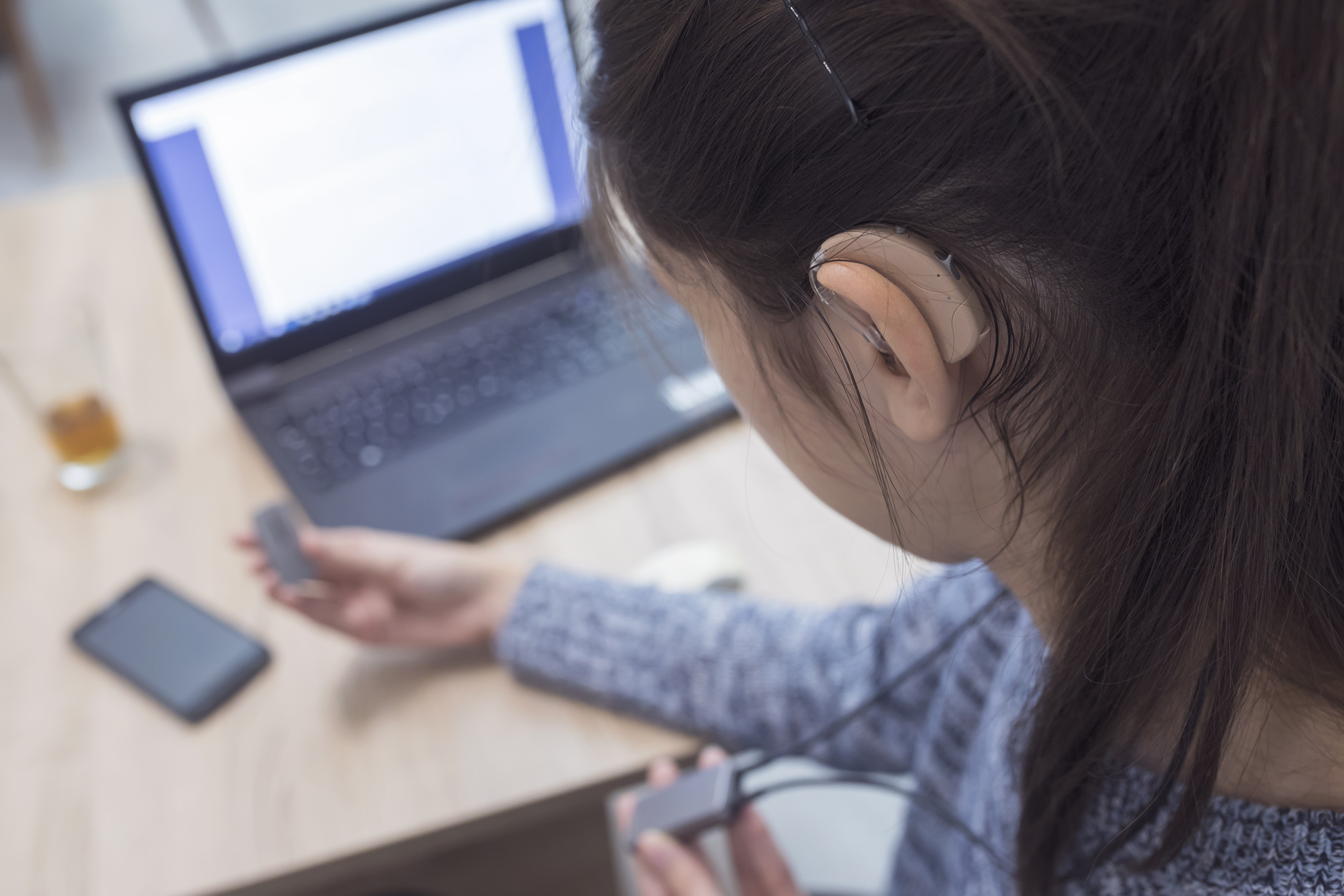
Tony Braun summarized the benefits and drawbacks of each system. RF can be transmitted through a short-range radio using FM, digital audio, or wi-fi, but it can’t be contained to a specific space. What that means is (RF) ALS can be overheard from other rooms. To add security to ALS, courtrooms often favor IR systems that keep signals contained within the line-of-sight space.
Finally, induction loops are seen as an old technology when it comes to ALS, said Braun, “but it has progressed massively in the last 10 years or so.” Induction loops are also one of the most discreet forms of assisted listening since the user can often just hit a button on their hearing aid to get hooked in. This method also has the advantage of using the hearing aid tuned to the user's specific form of hearing loss.
Many assistive listening systems support multiple channels of audio, so the same system can be used to deliver ALS and language interpretation services to specific audiences at the same time. As with all technology, new improvements are being made every day. One fast growing category is having a venue put up a QR code to download a free listening app to connect a smartphone to the audio stream over the wi-fi system. However, this takes a bit of extra care in network configuration to prioritize the stream.
Bluetooth technology is also improving. Auracast™ is a new offering that allows users to share or join an audio stream through their smartphones just like joining a wi-fi network. Instead of the one-to-one feature of traditional Bluetooth connections, Auracast opens up a one-to-many landscape with a larger signal range. It also doesn’t use wi-fi bandwidth and can deliver audio to an unlimited number of in-range receivers.
“As Bluetooth continues to evolve, we know that’s going to have an impact on our space,” Braun said. “We’re already innovating in that space and shared some initial prototypes for feedback at InfoComm23.”
The requirements of what types of spaces require ALS differ from state to state. In general, if an assembly area is open to the public and audio is integral to the use of the space, it’s likely required to have ALS. Certain government facilities like courtrooms always require ALS. As always, be sure to check with local authorities to make sure the AV design meets the local requirements.
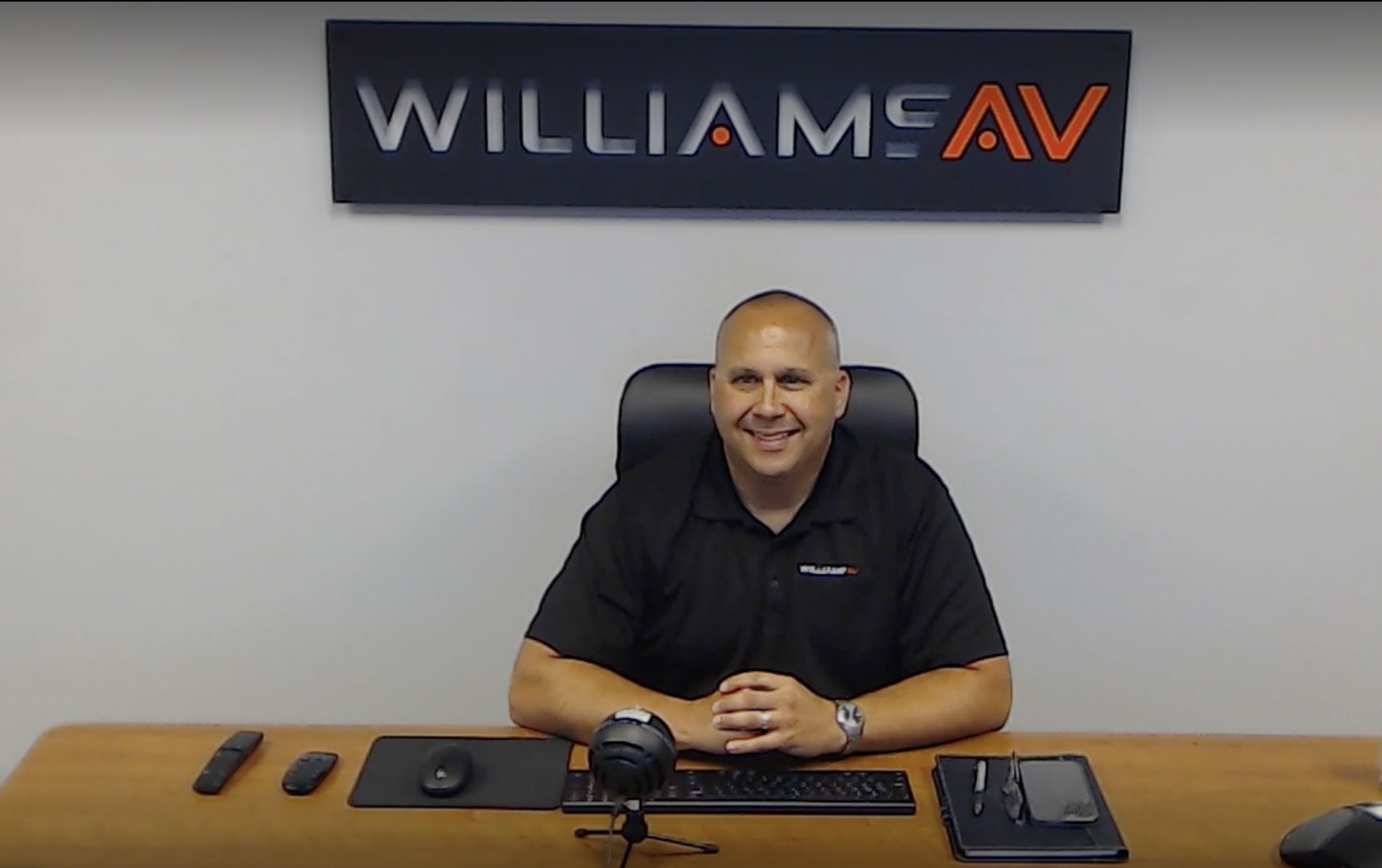
Listen to the full interview with Tony Braun at The Download Podcast.
Multisensory Approaches to AV
Creating AV systems that enhance understanding goes beyond assistive listening systems. Here are a few options designers should consider with any ADA required space.
Digital signal processors should be a part of any audio broadcasting system in order to eliminate undesirable sounds and boost frequencies that can be hard to distinguish. It’s all about solving for the signal-to-noise ratio.
Visual cues can also be a huge help in clarifying audio messages. We already use them without knowing it.
“The thing I noticed with some family members who have hearing loss – before they even acknowledge they had hearing loss, you can tell that they are reading lips more and the captions come on,” Braun said.
Appropriately sized displays or projection screens allow for live captioning or sign language interpretation. Supporting audio with visual content helps those with cognitive disabilities that make audio alone difficult to follow.
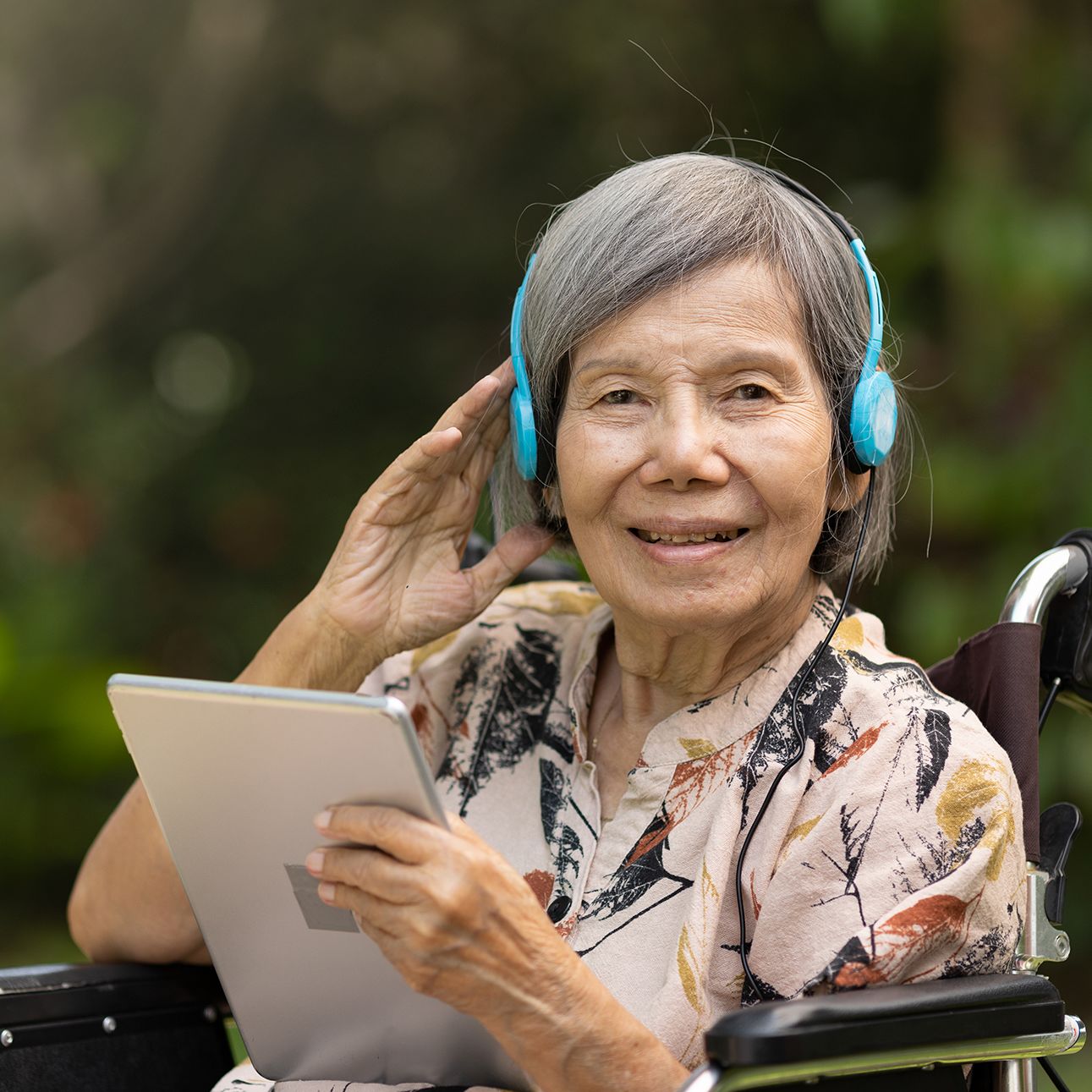
Be sure the audio used for automatic closed captioning is clean by using steerable room microphones with smart sensing technology that focuses on the person speaking.
And remember, the overall goal of ADA guidelines is to create an equitable environment for anyone using a space. Designing spaces with the guidelines in mind enhances the experience for everyone. For more specifics on the different types of ALS, check out the Hearing Loss Association of America’s “Comparison of Large-Areas Assistive Listening Systems.”
Take a look at the last blog in this series, where we discuss corporate and education applications and the ADA. For a larger dive into all these topics and more, get your free copy of our guide, “ADA in AV: Making AV Technology ADA Compliant.”
This blog series is intended to be used for educational purposes only. The intent is to serve as a guide to ADA regulations pertaining to the installation and usage of audio visual technology. However, none of it shall be construed as legal advice, nor should you rely on this content without obtaining your own project-specific verification.
Those seeking additional details or legally accurate definitions of the ADA’s audio visual technology requirements should visit www.ada.gov.
ADA Blog Series Part 1
Let's Get Physical
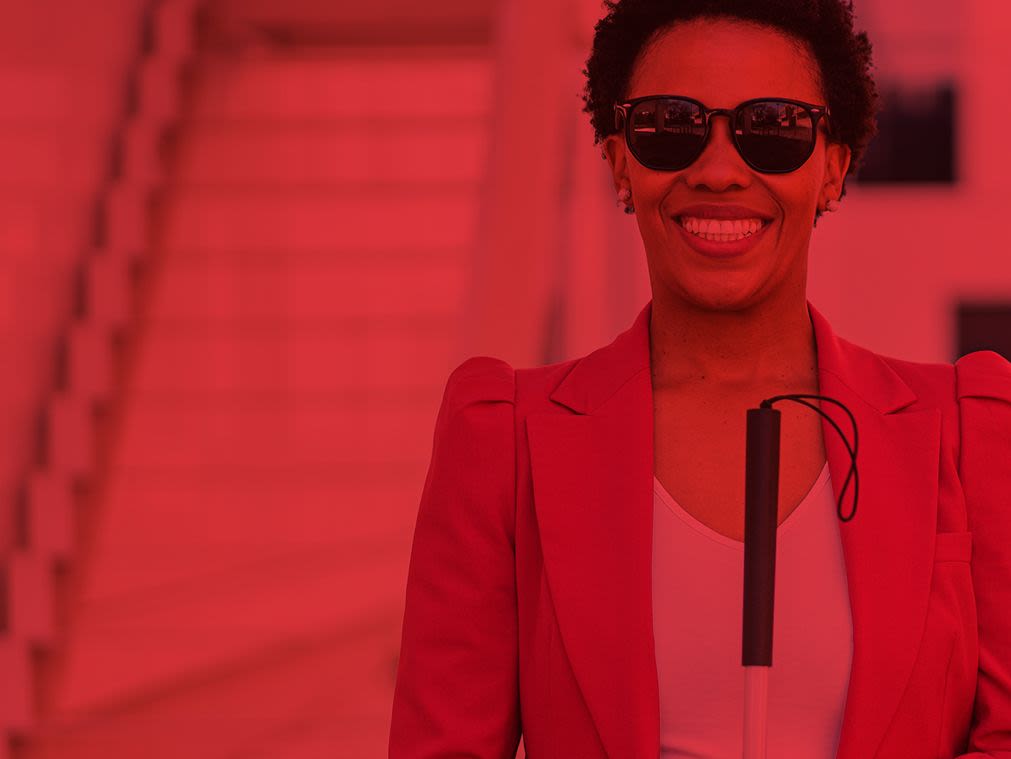
ADA Blog Series Part 2
The Big Picture
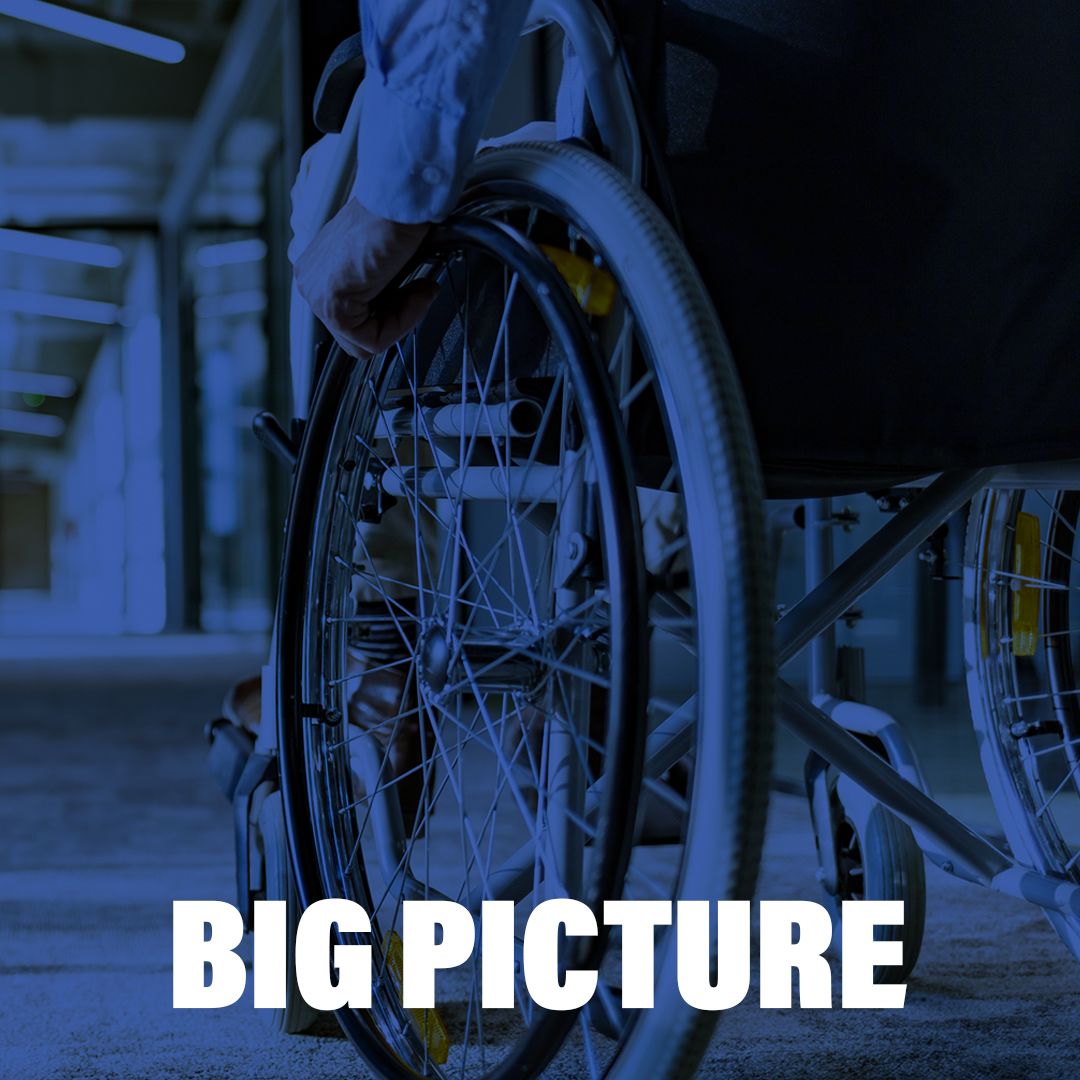
ADA Blog Series Part 4
Real World Results

Explore ADA Resources

Get the ADA in AV eBook
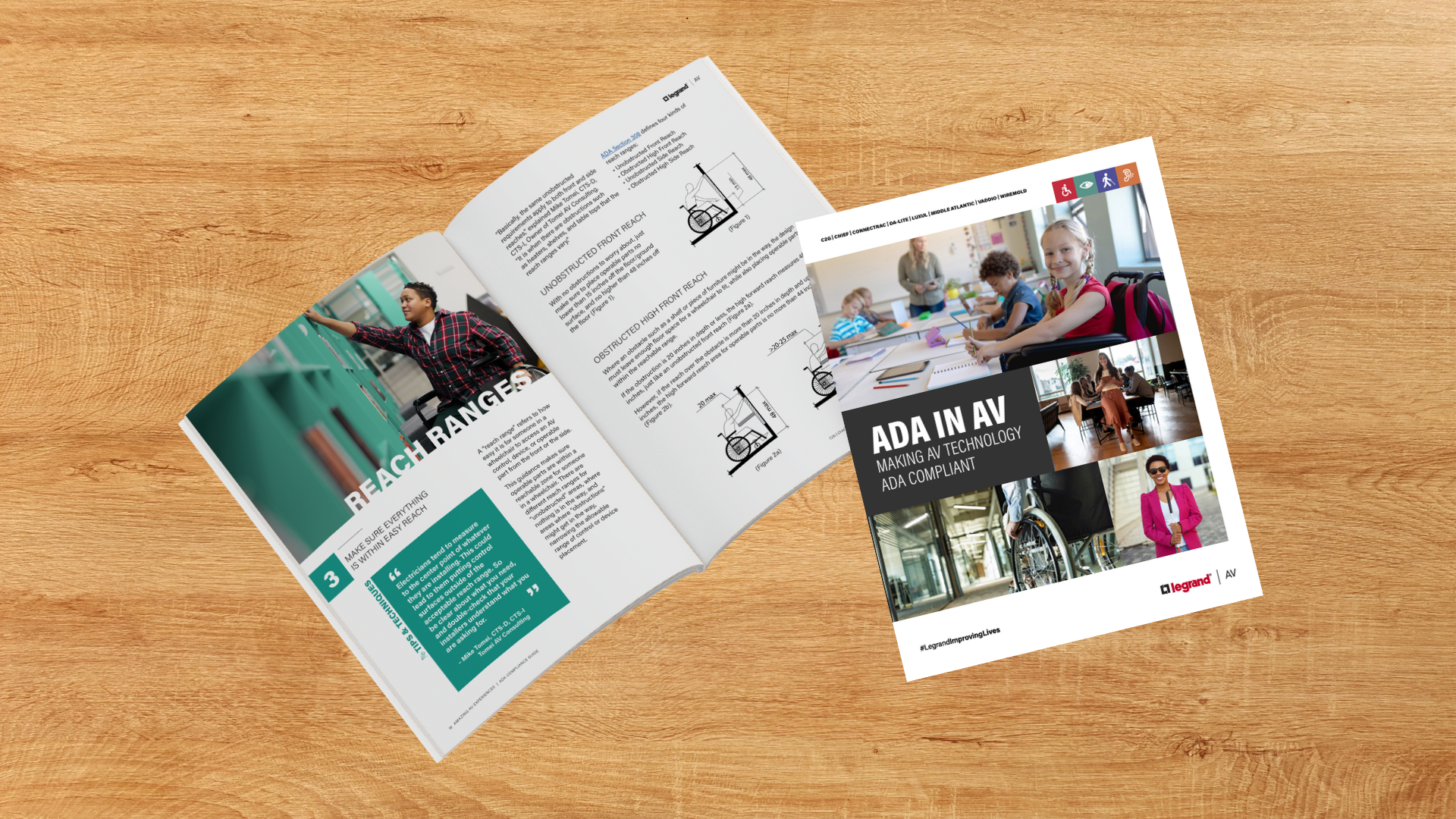
Take ADA Courses at AV University
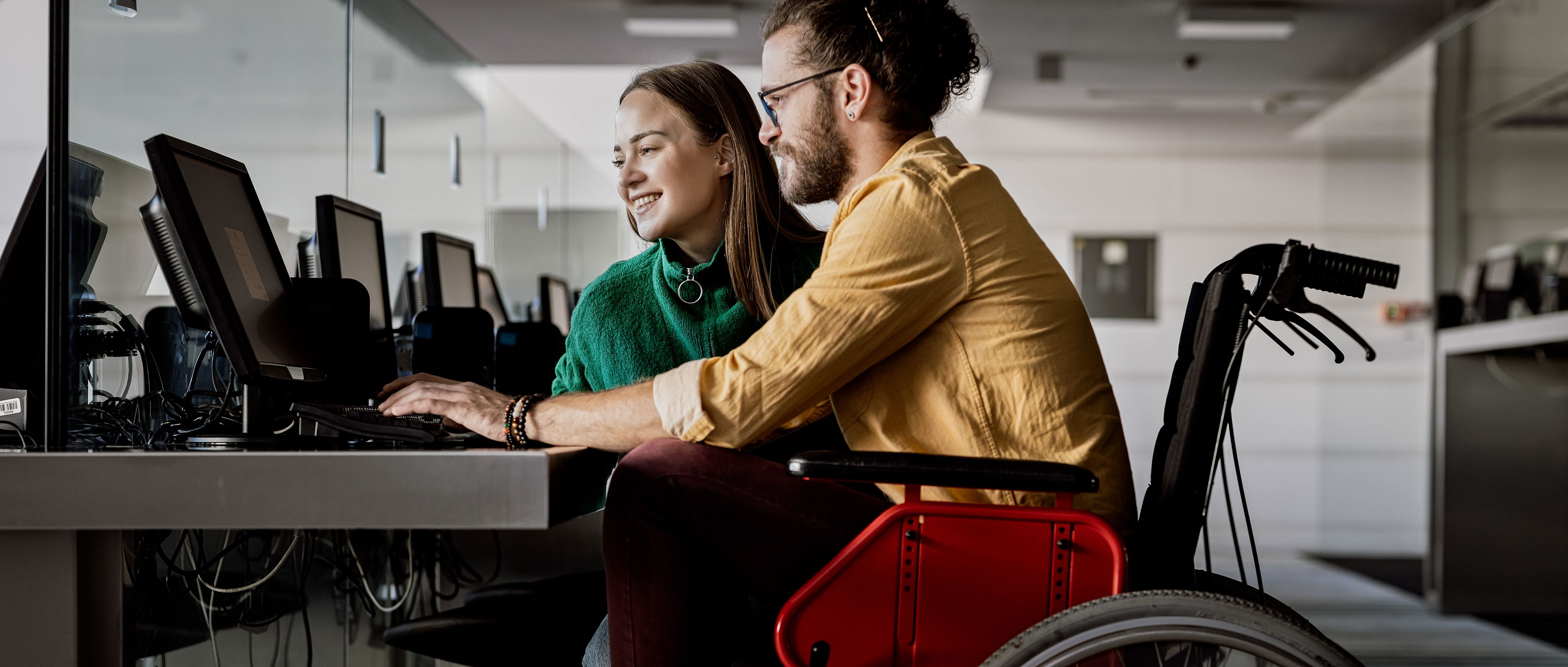
Learn More at the Podcast


